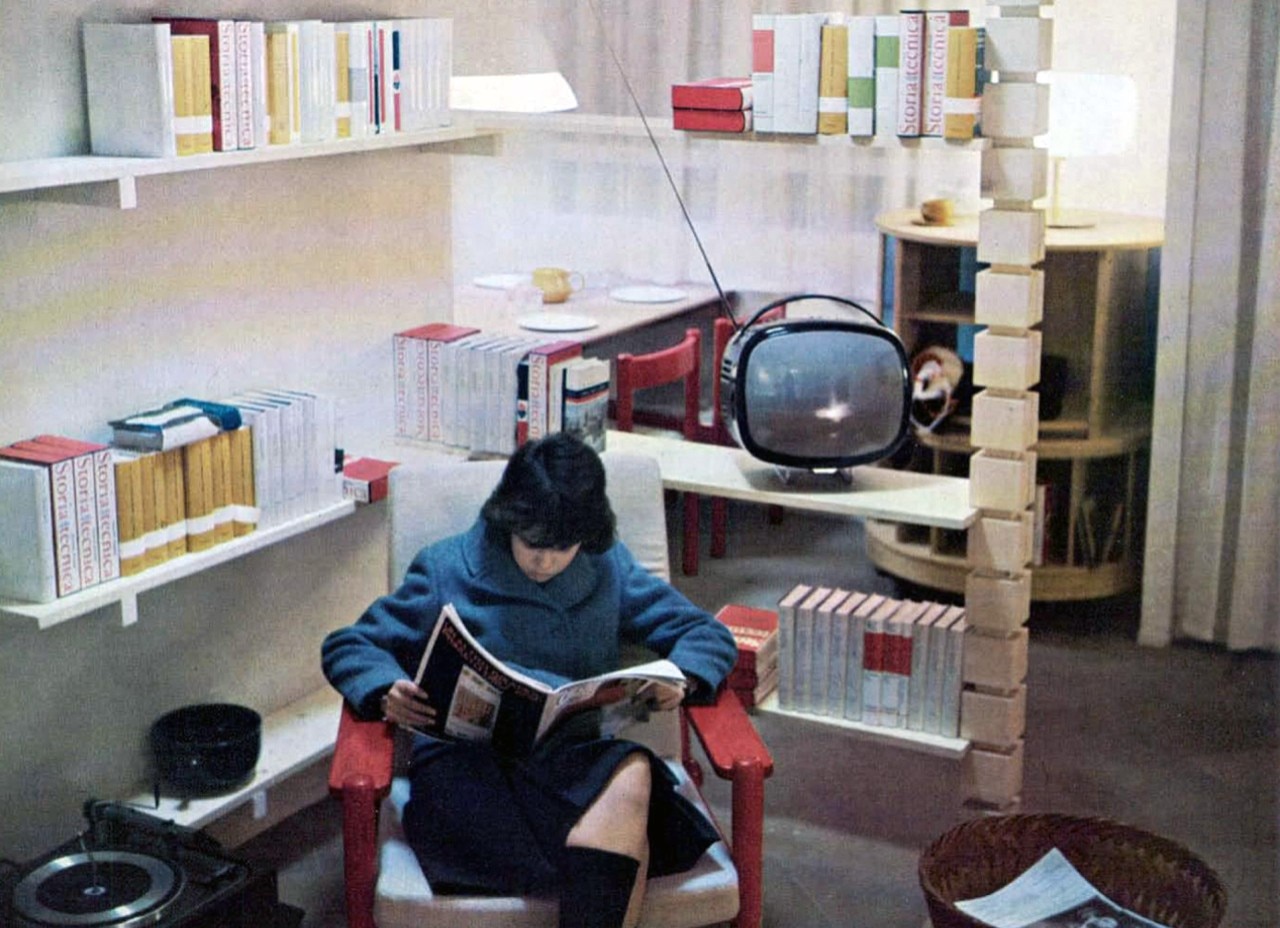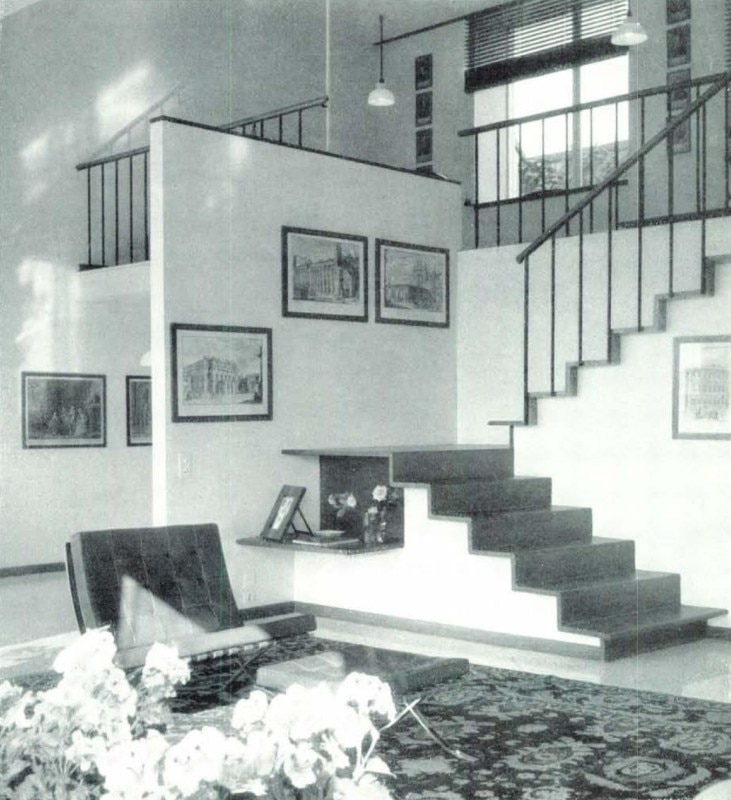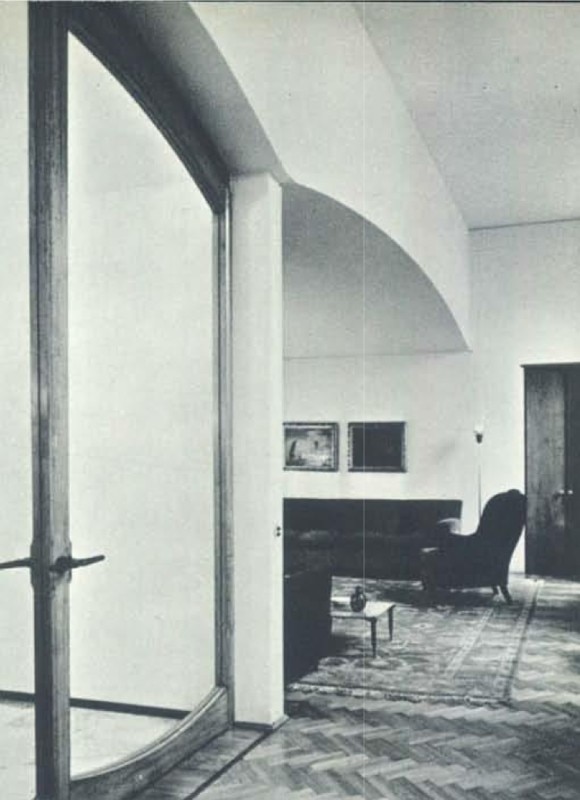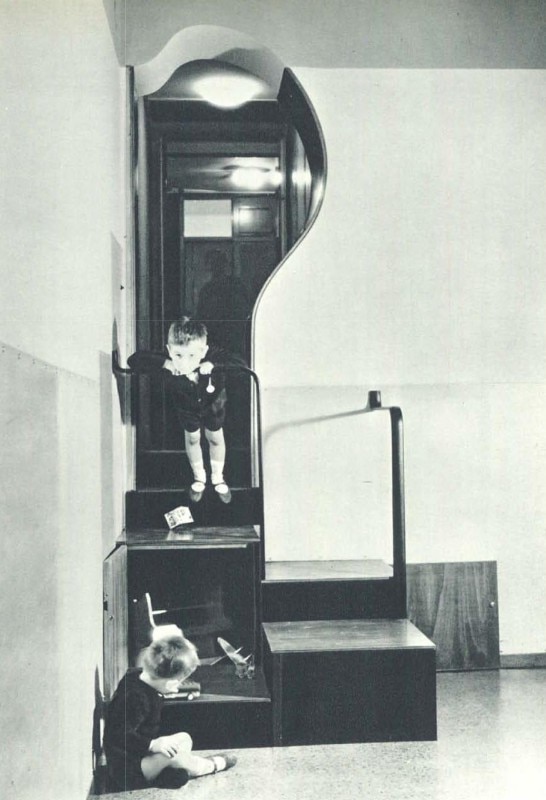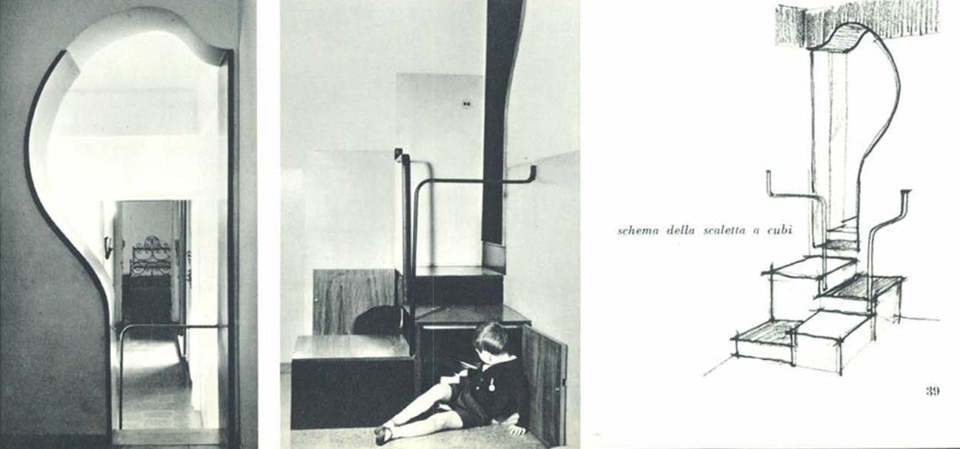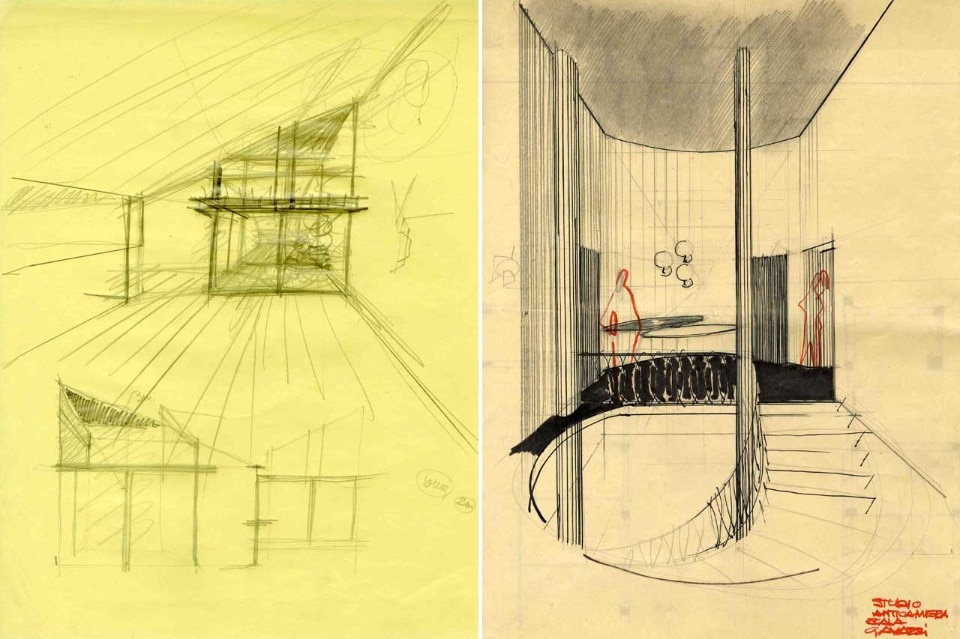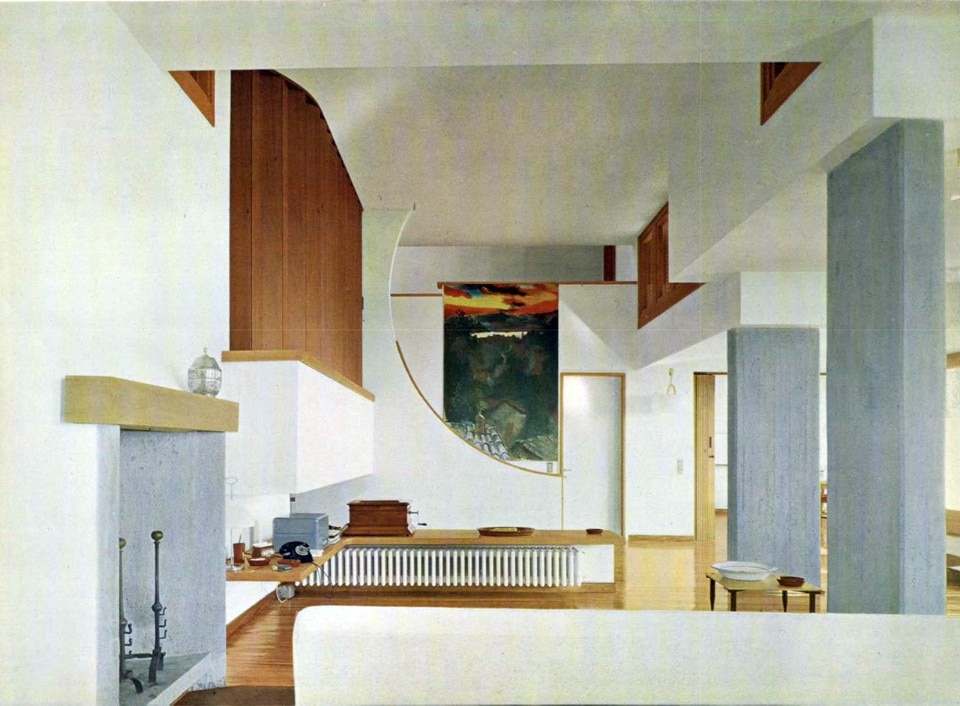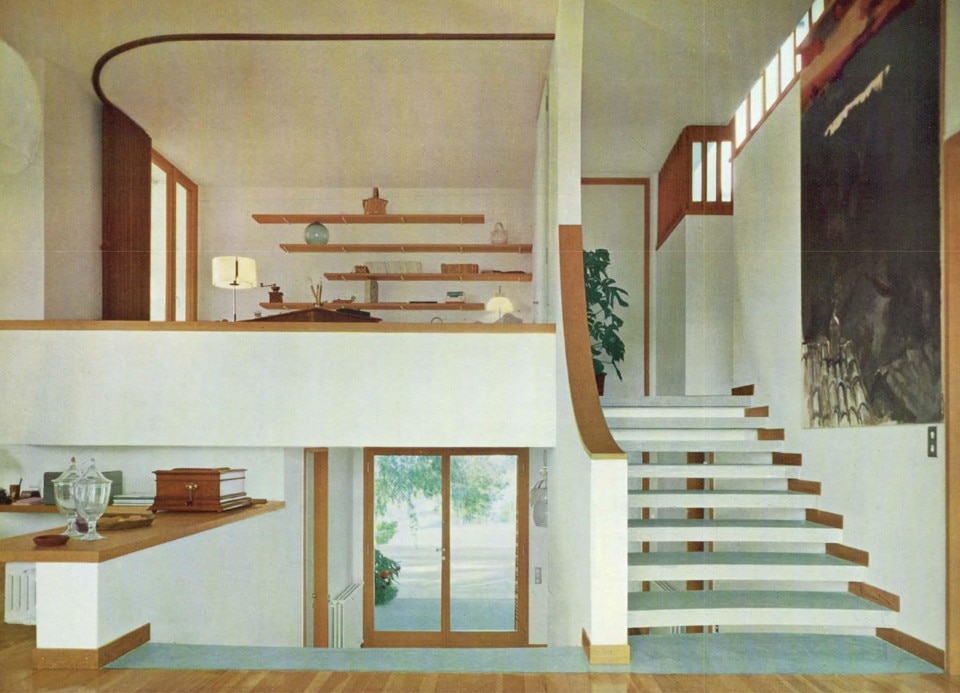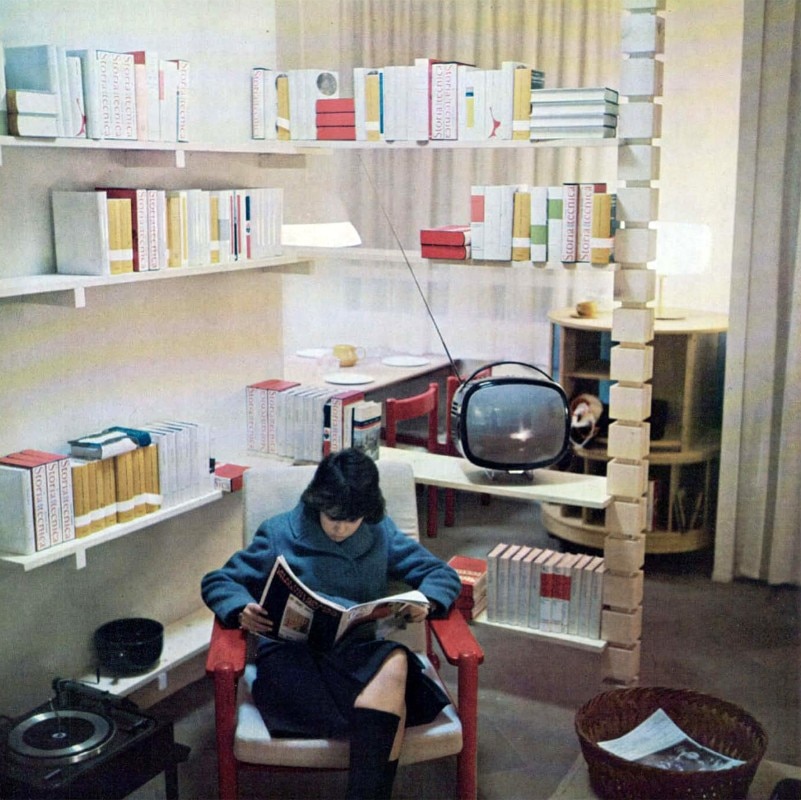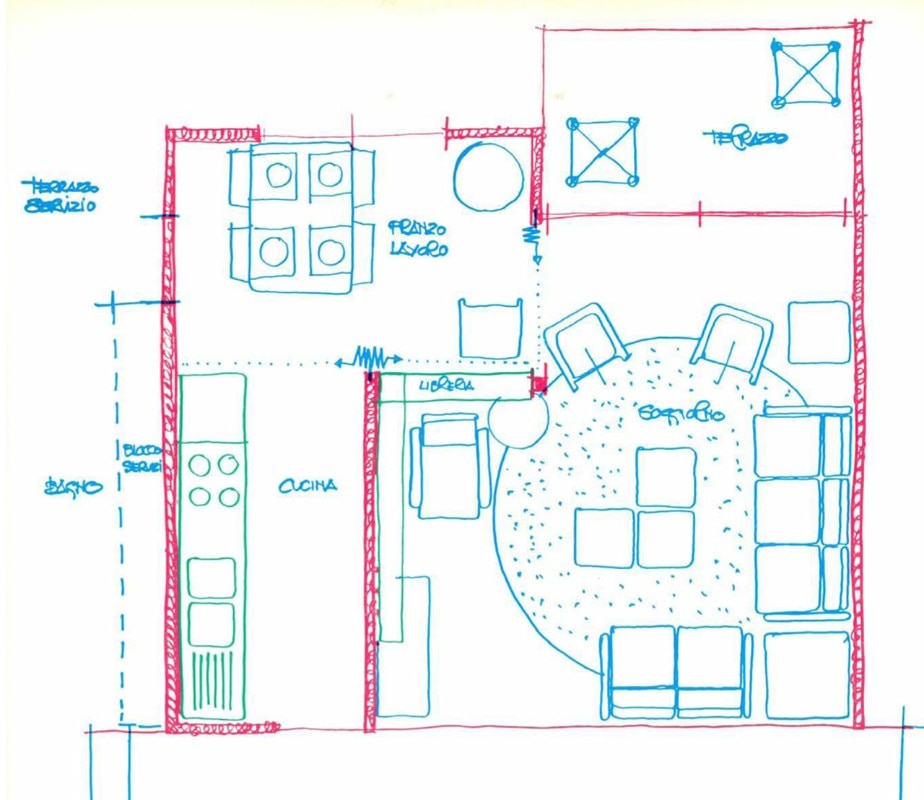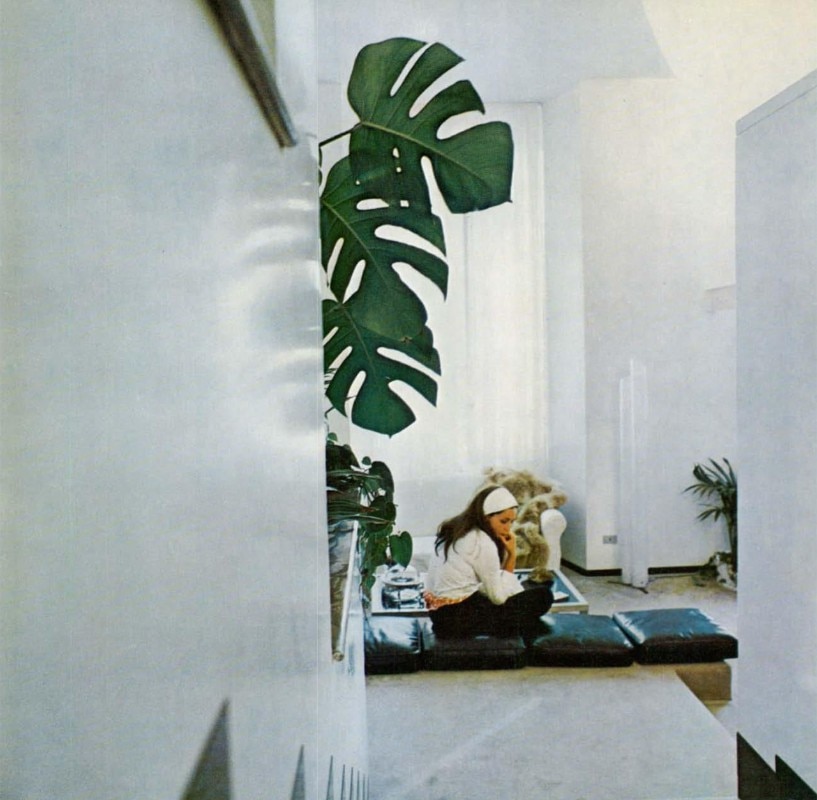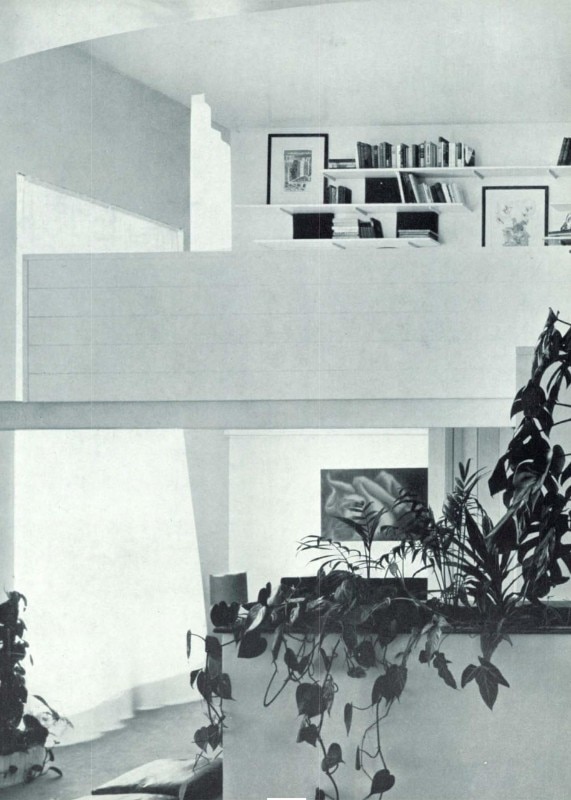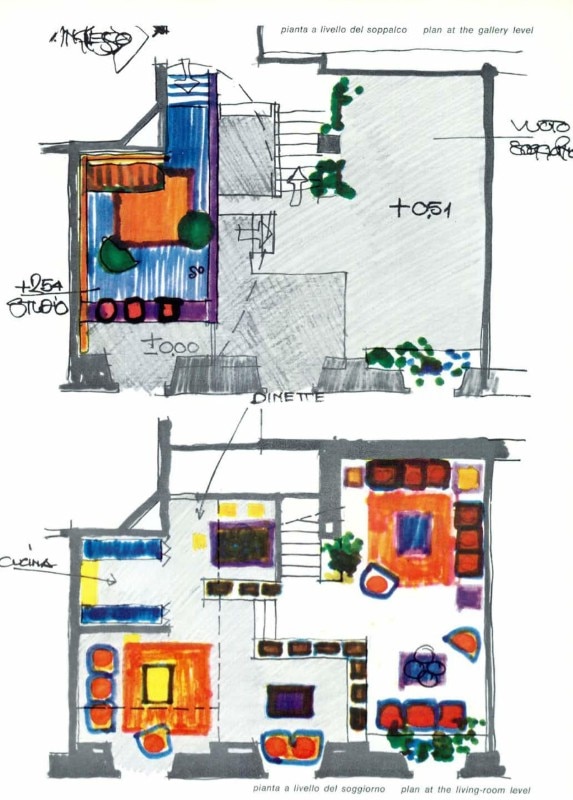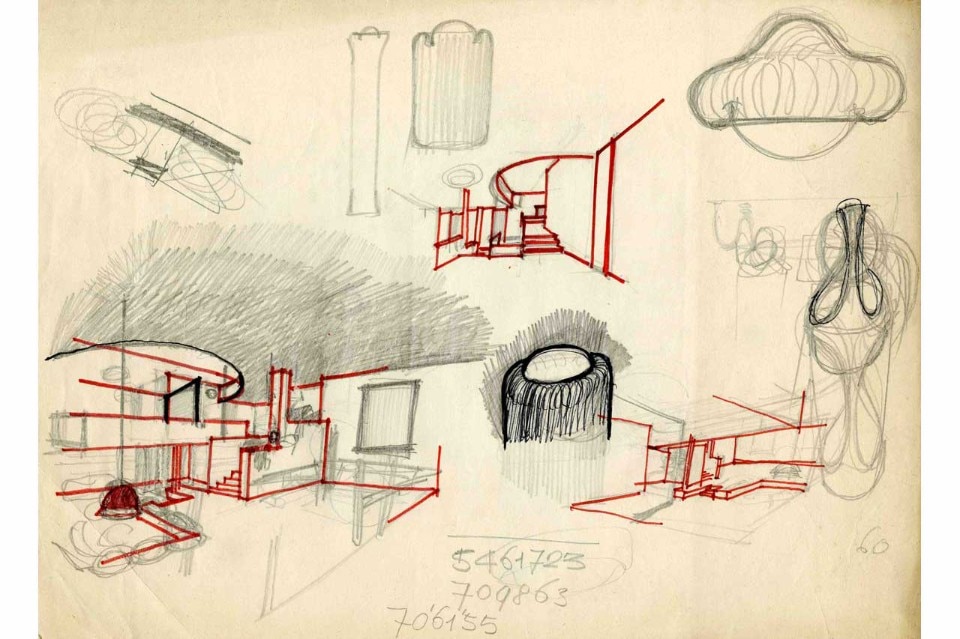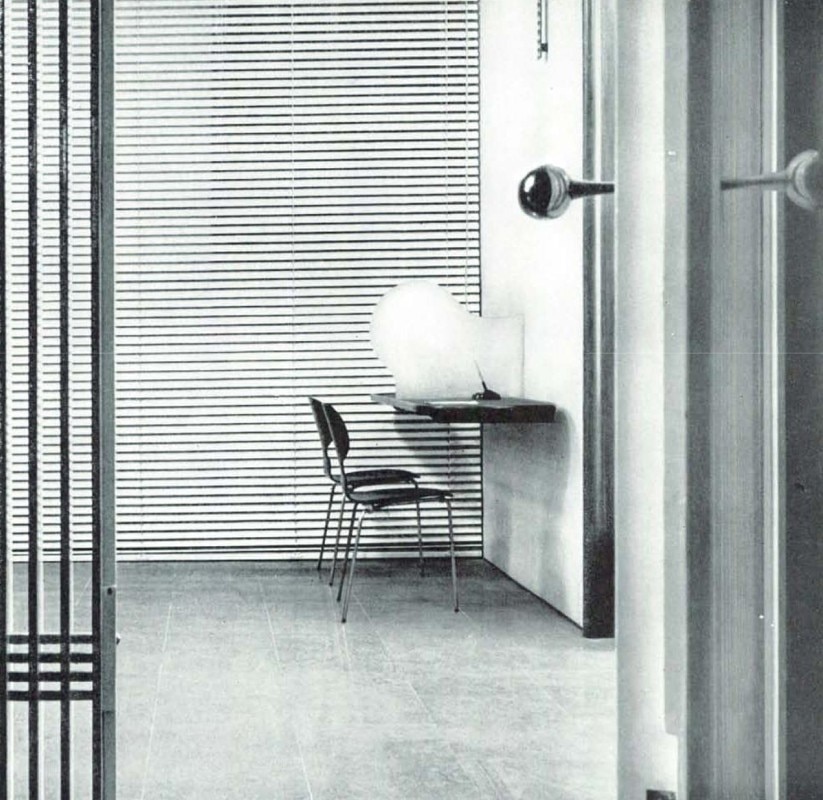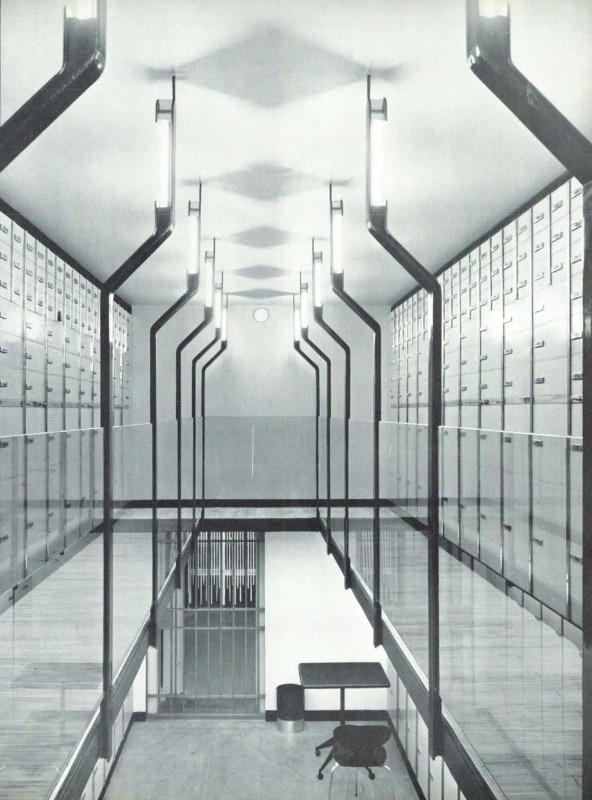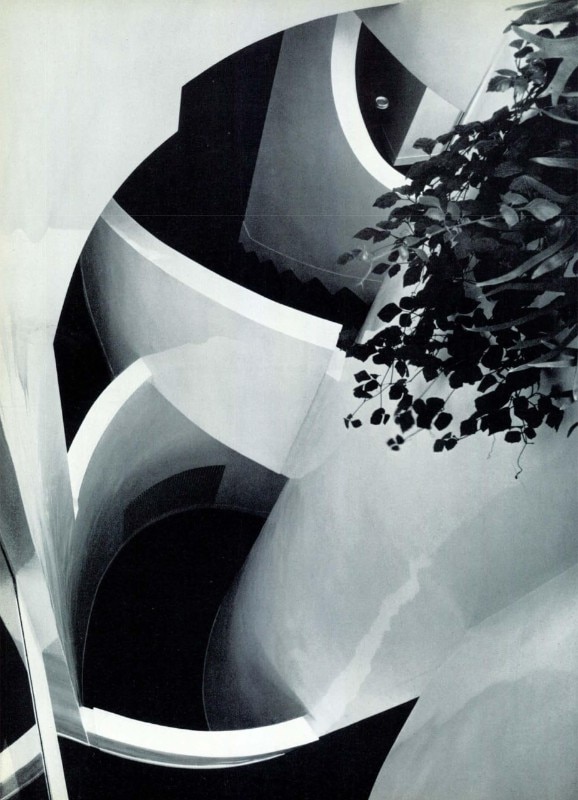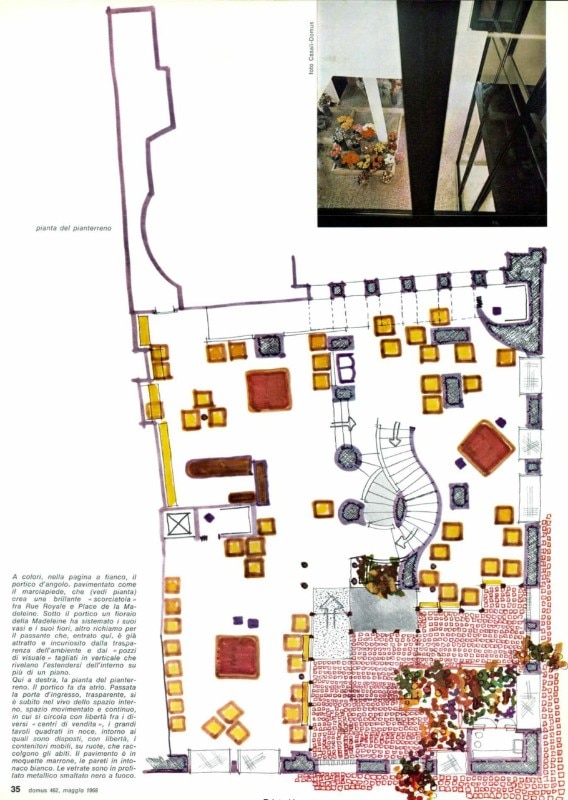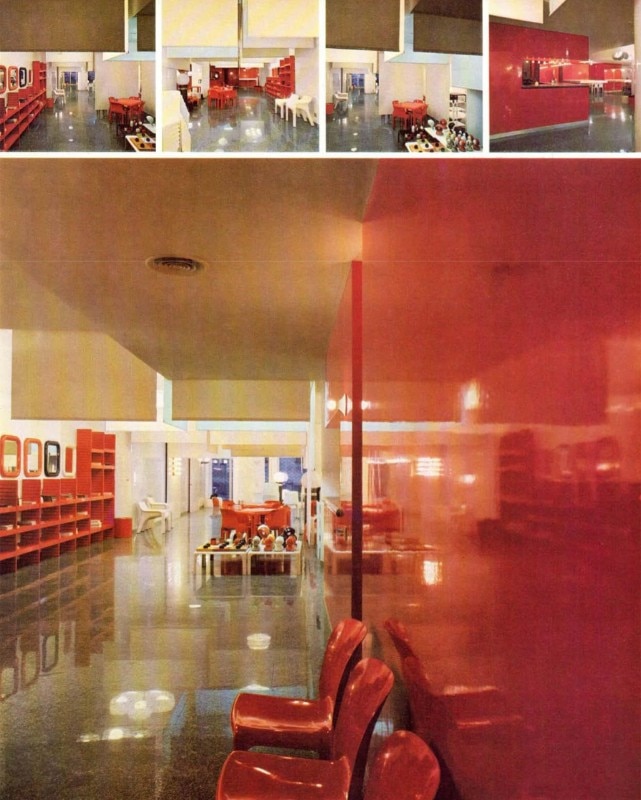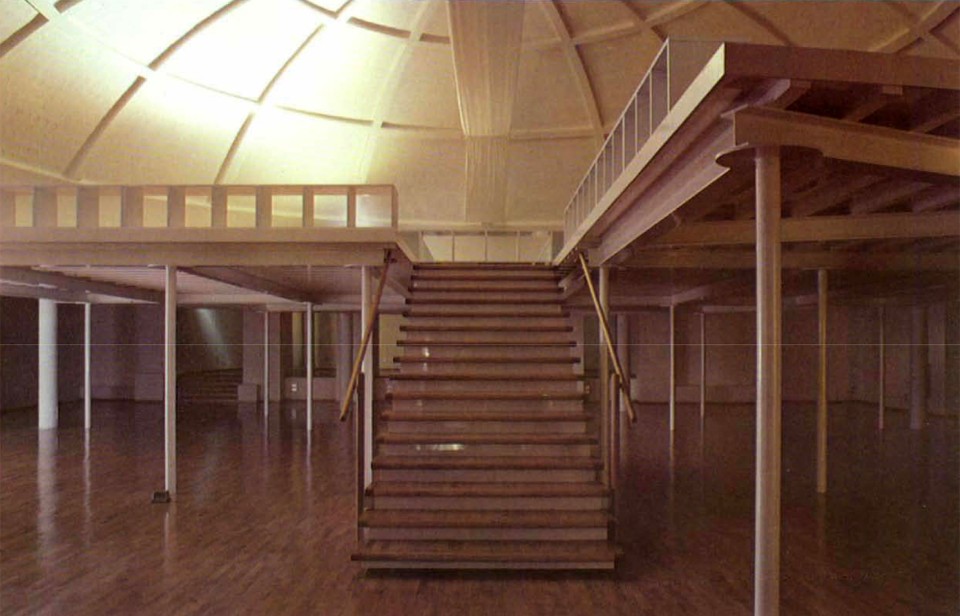Be it expressed by steps embracing couches or morphing into seats, by objects morphing into walls to create rooms, by natural light generously flooding spaces or shrinking them to a point-like dimension to make them more social or intimate, the whole design philosophy of Vico Magistretti — the origin and unity of the different trajectories it is made of — is centered on the uncompromised act of inhabiting. This is why his figure always shunned all caging identity or style squad; this is why, beyond his anti-rhetorical rhetoric — his constant understatement, undermining any possible attempt to get him bragging about his work or philosophy — there is nothing but his spaces, to stand for him as design statement; this is why his interiors are the world where his architecture, his design and his thoughts finally merge, and Domus has constantly kept on exploring and narrating such spaces since the 50s.
I am certainly shaped by the modern movement. Which explains why I look at everything as architecture , including design.
Vico Magistretti, Domus 748, April 1993
Since the beginning, and then in majority, it is all about Milanese interiors, where Magistretti from time to time arrives to renovate or redesign, thus coming across several hot issues of contemporary architecture.
The first to appear is the Bassetti apartment (Appartamento all'ultimo piano, Domus 335, October 1957), in Milan of course, completed in 1953, shortly after the antiquarian interventions of Tomaso Buzzi on the Villa Necchi Campiglio by Piero Portaluppi, apparently joining the flow of bourgeois interiors of postwar years, where historical pieces used to merge quite easily with modern furniture; something similar seems to happen in the Gavazzi apartment where Magistretti reworked the reception spaces (1953-59; In una vecchia casa, a Milano, Domus 354, May 1959).
Still, these two projects were already claiming for a certain status of diversity: in the Bassetti apartment, the most emphasized component is actually the double height of the living room, connecting two terraces on different levels, while the Gavazzi house is a concert of vaulted false ceilings abruptly interrupted right in the middle of a room, of bookshelf-walls, of curvy openings leading to deconstructed stairways made of a cascading composition of cubes.
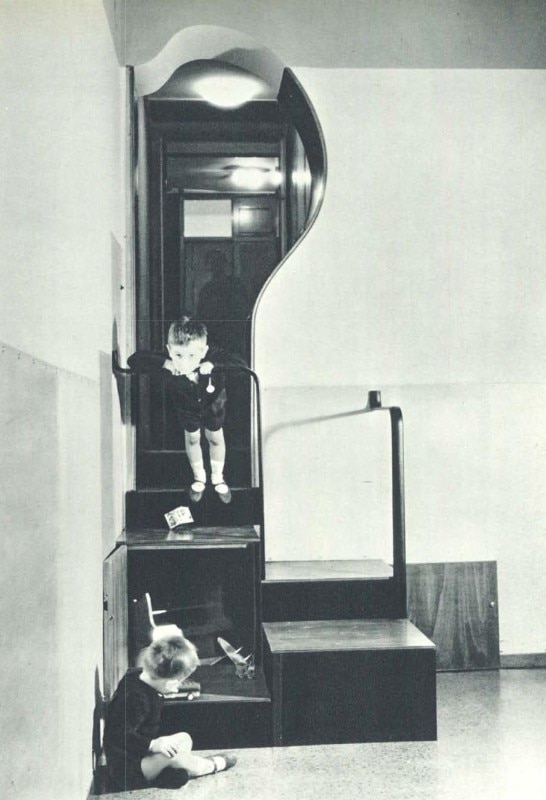
The real core of these projects is the shaping of a spatial device, in connection to some legacy of Adolf Loos’s Raumplan philosophy — remarkably present in Magistretti’s work as shown in a recent exhibition — where the space layout is structured by the continuity of different interior heights and levels and by the possibility to look across a space into another. Such attitude will remain through the decades, and it clearly appeared in the Cerruti apartment in Milan (1969, Un solo ambiente, diversi livelli, Domus 479, October 1969), a totally contemporary pied-à-terre where the shifting of levels describes the distinction of different spaces, following the evolutions of a single shape morphing time after time into a seat, a stairway, a sculpture creating a dialogue with other sculptural pieces such as the Chimera lamp.
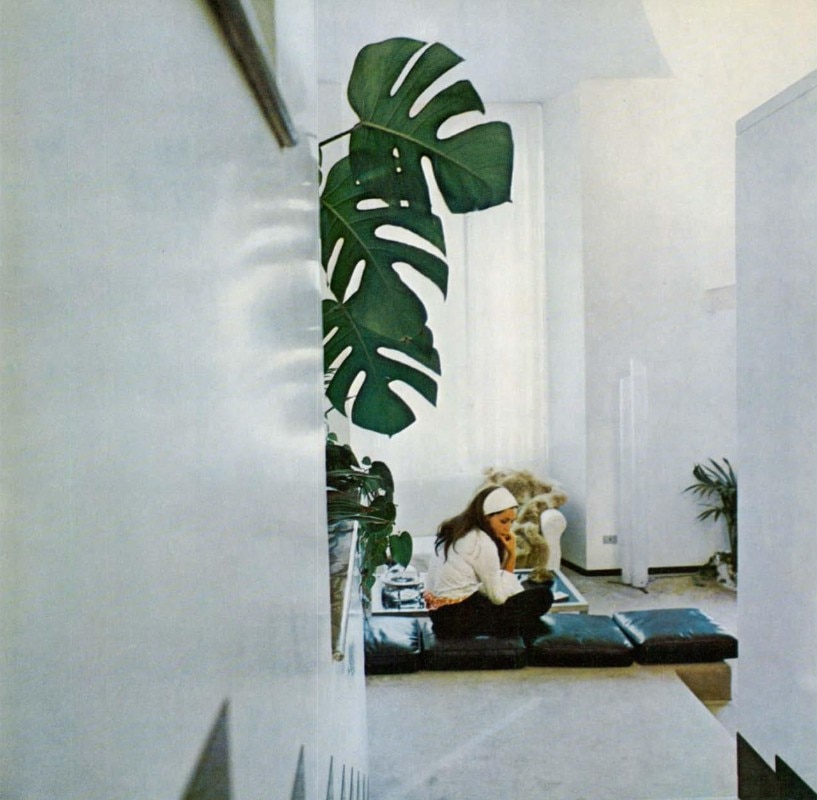
Still, Magistretti would never orthodoxically follow the entire Raumplan gospel, as his houses would witness, with their interior complexity reflecting in the tormented exterior masses. Nor his point would end up by being the mere fulfillment of somme desire of luxury. His creations are structures, pure spatial devices as we said before, that can still stand even when emptied of any possible precious completion. The concept presented by Magistretti in 1965 for the exhibition La Casa Abitata (The inhabited house) at Palazzo Strozzi in Florence, wanted to declare war to the Italian middle-class home system articulated into tinello, cucinino, sala (a small living room for the everyday, a kitchenette, a drawing room) by articulating a hybrid space, very easy to reshape by operating some folding panel, fully anticipating the contemporary reflection on the flexibility of domestic spaces, and all this came from the design process of a large housing complex developed for the MBM cooperative in the Gallaratese area of Milan (La Casa Abitata, Domus 526, May 1965).
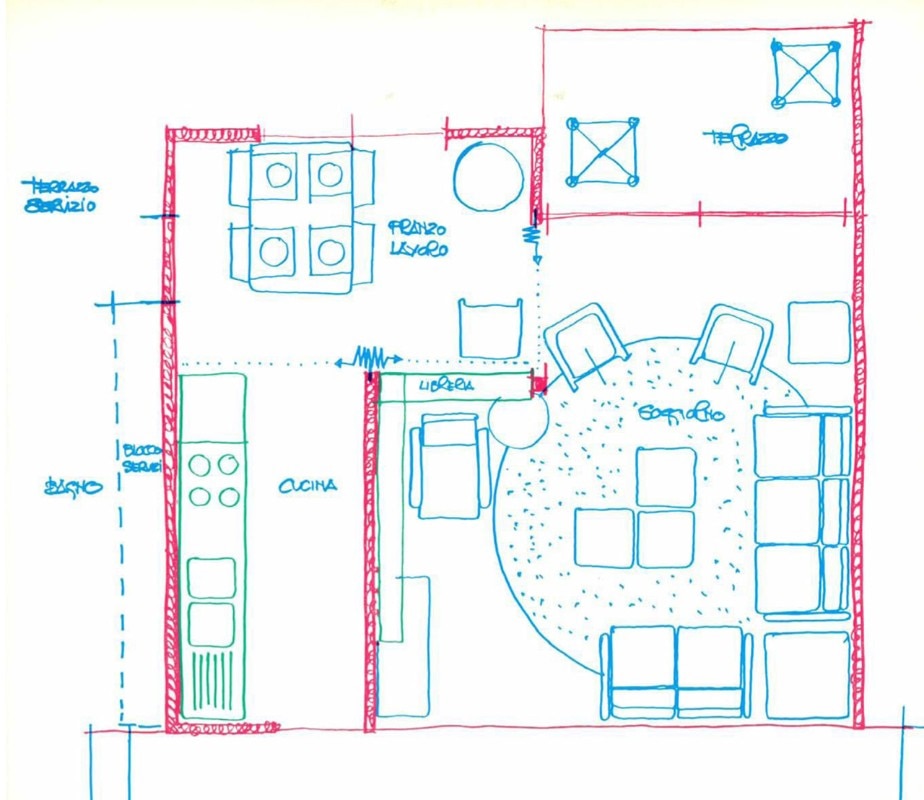
Such attention in modulating each single space as a living device, as a form of architecture instead of an empty box to be filled up with objects, would never leave Magistretti: in 1987, in fact, he would still involve Ugo La Pietra, Martine Bedin, Franco Raggi and Daniela Puppa in a collective research on the bathroom space as a representation of the wider extent of domestic life domestica (Dal metaprogetto al progetto, Domus 687, October 1987).
It is a strictly architectural principle, that Magistretti would keep in the highest respect through the years, as he also declared to Domus in an interview from 1993:
“…when the house is finished, I wish it could stay empty. (…) In a way, when I do interior architecture, I’m already making furniture. For instance, a parapet can be made into a seat. Why? because I’m not interested in having a parapet, whereas I can use a wide flat surface. Similarly, in a house I’ve just finished, I have put in a gallery that skirts the drawing room from the entrance as far as the terrace, so one is not in a block of flats any more but on a “palermitan walk” with a sensation of space.”
(Gli arredi degli architetti, Domus 748, April 1993)
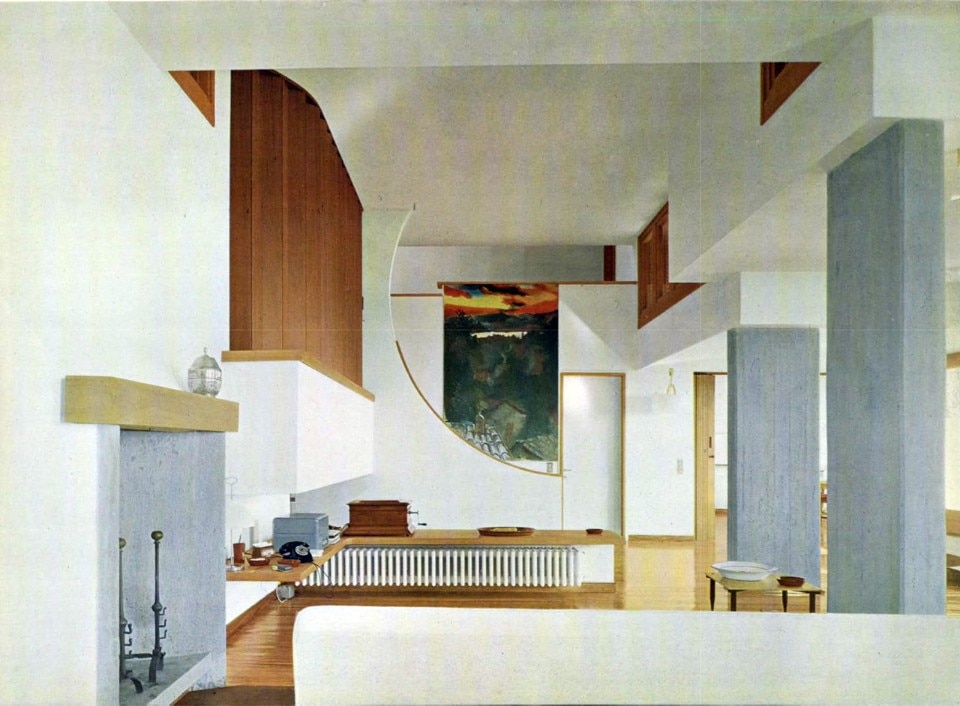
In a way, it was an early formulation of that distinction between interior design and interior architecture which has often been evocated in contemporary debate: all interventions by Magistretti are structures, where articulation and details contribute to the shaping of perception and aesthetics.
So it is in the safety deposit boxes area of Credito Varesino bank in Milan (Nuove sistemazioni di ambienti in una banca, Domus 342, May 1958) where the red-painted metal structure integrating the lighting system creates the character of peculiarity of a space that would otherwise have been destined to be anonymous by definition. So it would be for several retail and workspace projects realized during the following decades. The Cerruti 1881 Styling Center in Paris (Magistretti a Parigi, Domus 462, May 1968) is a merging of different scenarios, shaped by transparent boxes, stand-alone partitions, sequences of elements in different frequencies, a sculptural staircase developing a fan-shaped structure.
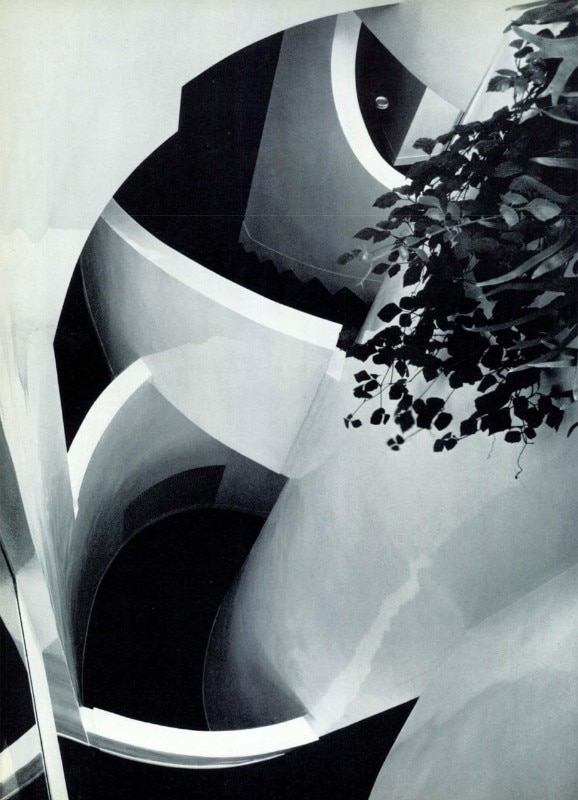
In the Artemide store in Milan (Schermi a saliscendi, Domus 508, March 1972), space-shapping devices creating architecture are once again the core of the project: the fabric screens can come down from the ceiling to create partitions across the exhibition space, or remain wrapped up above to draw the pattern of a shady, geometric artificial sky.
The Cassina showroom in Milan, completed in 1979 might inspire some Postmodern reminiscence, with its steel beams painted white, acting as a trabeation to some round-section iron columns underneath, but — as it was remarked in the article which presented this space (Negozio come moschea, Domus 602, January 1980) — the substance of the project is the invitation to an experience of existing space, with its bizarre lowered dome, the architectural promenade one can do underneath, stressed by a long white fabric strip which is also a room-sized lighting fixture.
The rest is about selling, and selling for good. Little importance is given to style orthodoxy or strictness of composition.Experience of space, that is what is all about.
The “wide flat surface” where others would have apodictically said “parapet” or “seat”. The “palermitan walk” where, like in a common apartment building, others would have put a corridor.
In a way, when I do interior architecture, I’m already making furniture. For instance, a parapet can be made into a seat. Why? because I’m not interested in having a parapet, whereas I can use a wide flat surface. Similarly, in a house I’ve just finished, I have put in a gallery that skirts the drawing room from the entrance as far as the terrace, so one is not in a block of flats any more but on a “palermitan walk” with a sensation of space.
Vico Magistretti, Domus 748, April 1993


